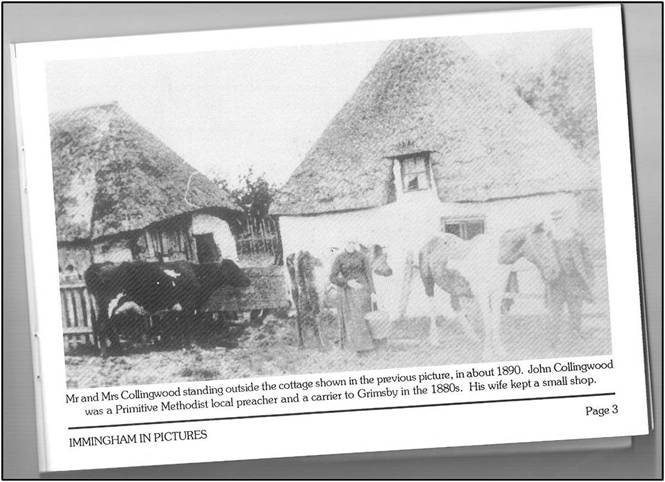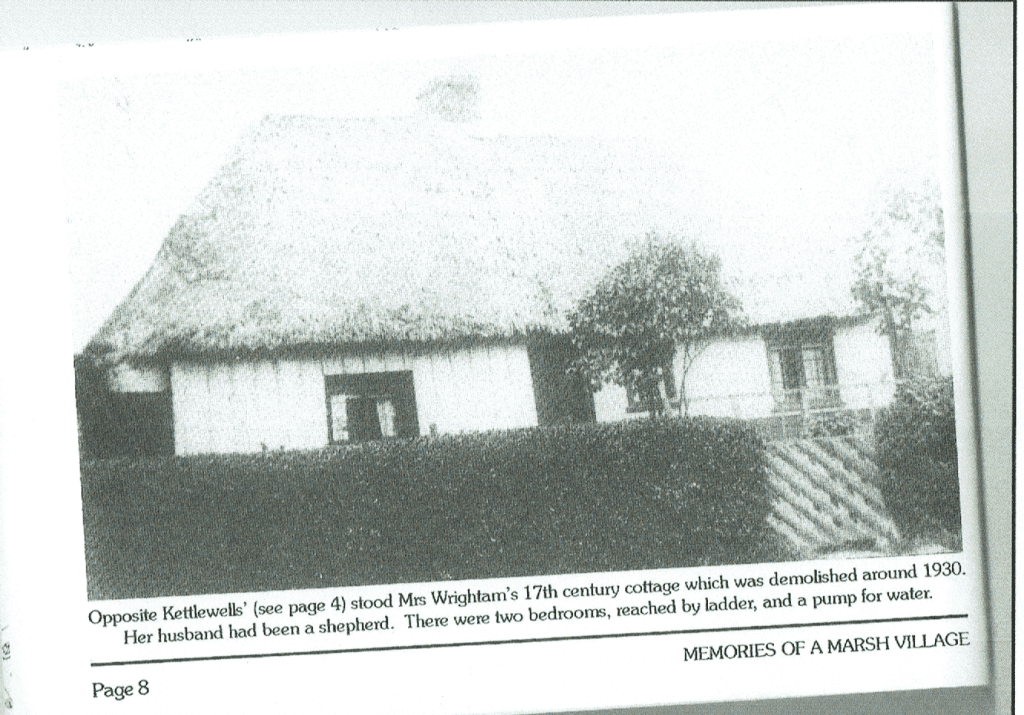Moving east to Immingham in 1900 the town seen today did not exist because the building/excavation of the Dock was not started until 1906, eventually officially opened by King George V in 1912. As with Alexandra Dock in Hull opened in the 1870s, Immingham Dock was built to export coal from the South Yorkshire coalfield, indeed it could be seen as ironic today that a hige coal importing site exists on the west side of the Dock complex, some of this coal coming from Australia! and destined for the Drax and Ferrybridge power stations, for as long as we need them!
In 1900 Immingham was a spring-line village with its very interesting parish church incorporating some Saxo-Norman features. As previously stated, Immingham retained an interesting collection of mud-stud-and-thatch cottages until the 1930s. The one catured in the photo above was said to have dated from the 17th century, had two bedrooms reached by ladders and an outside pump for fresh water. The outside pump would have been dug down to the bedrock chalk, thereby being a very clean water source. The dating of such houses can be misleading and should be more accurately stated as ‘A house on this site had existed since the 17th century’. Mud-and-stud or wattle-and-daub walling rarely lasted more than two or three generations so such housing was then re-built on site (re-building usually being a d.i.y. skill of the time with no builder as such involved). Tenants slept on platforms looking up at the underside of the roofing thatch, The last tenants here were a shepherd and his wife.
The central chimney stack shows this to have been a ‘baffle-entry’ house, on walking through the front door you faced the side of the central brick chimney stack with a fireplace on both its sides heating the either side rooms.
(to be continued)

